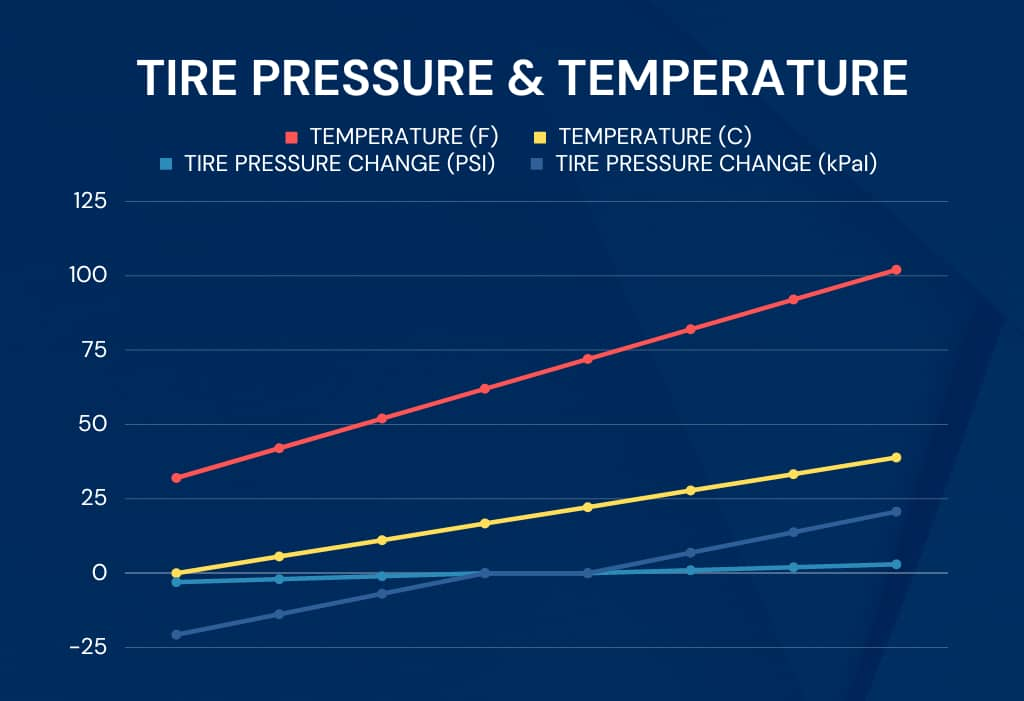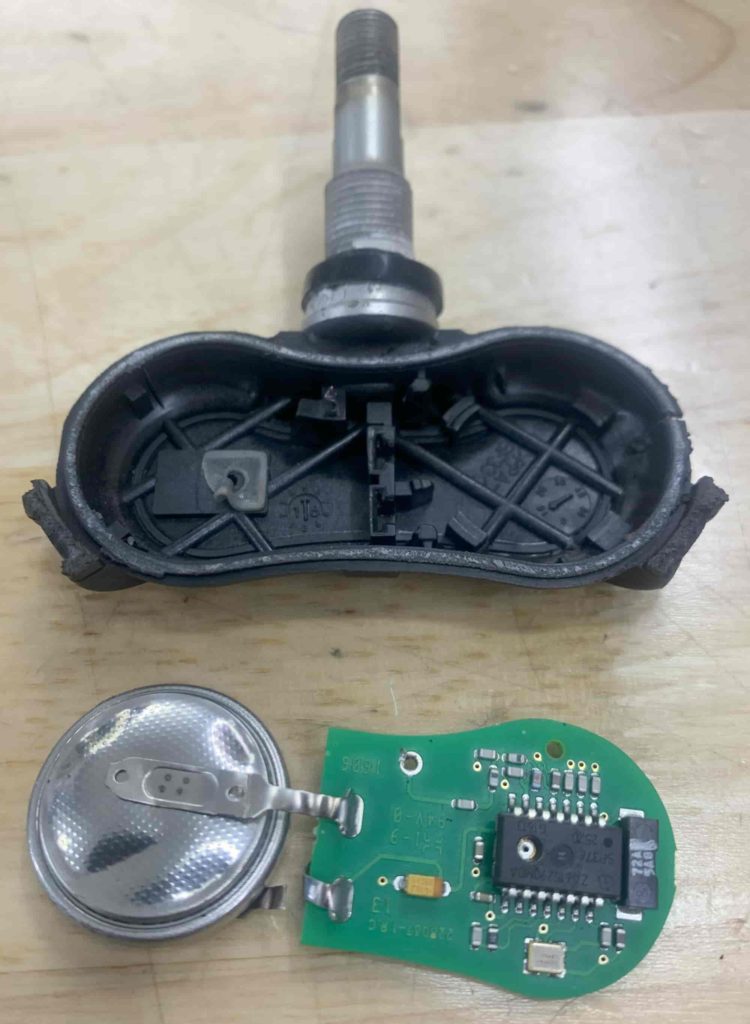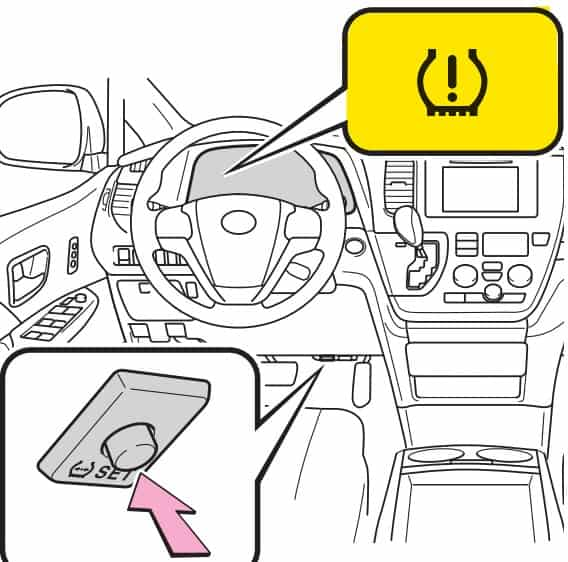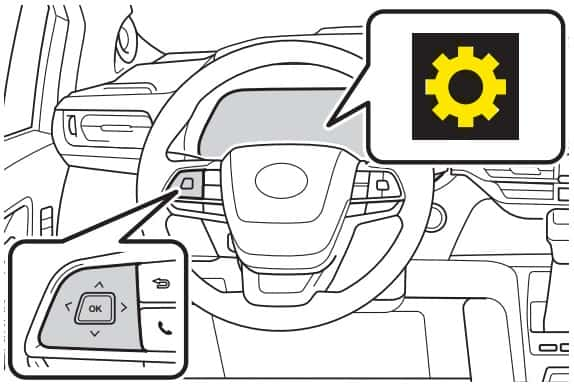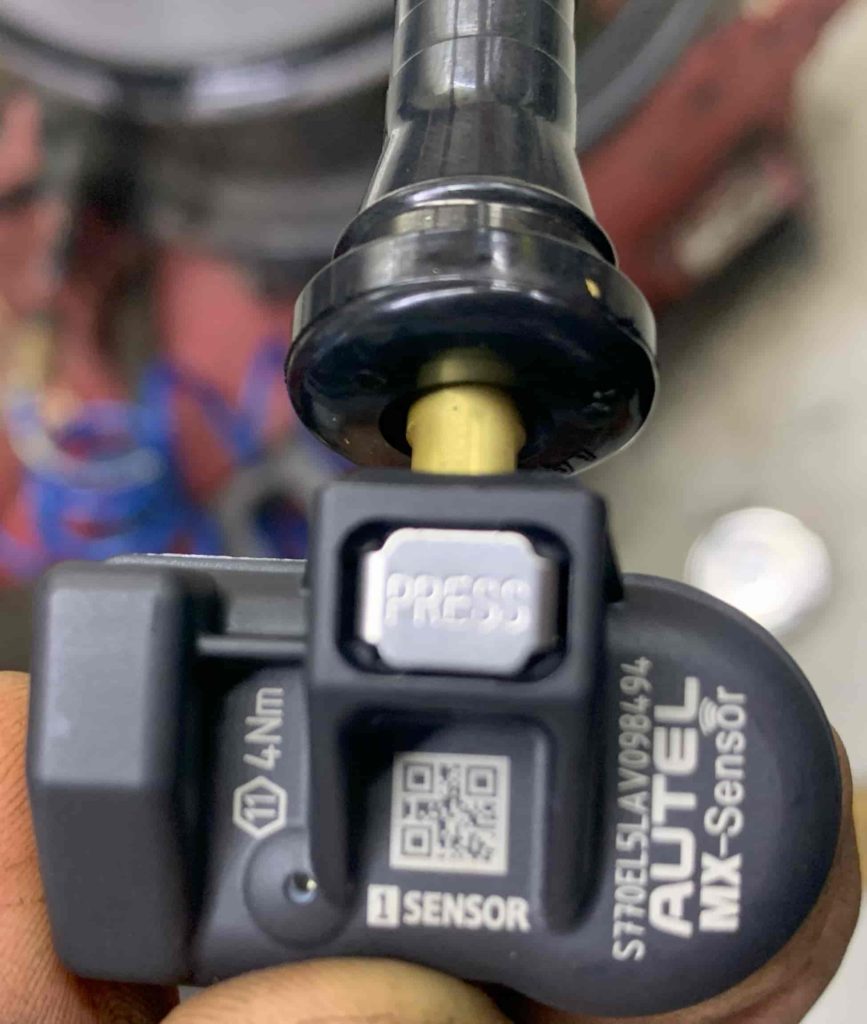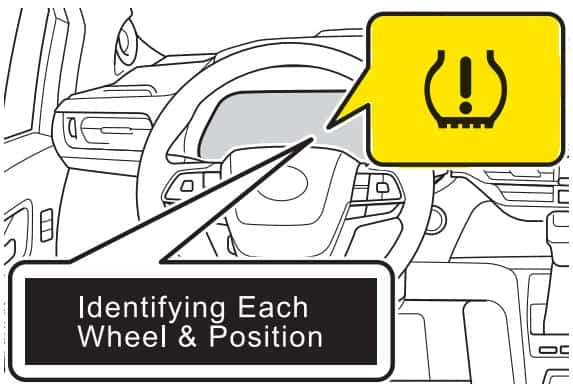What is the Toyota Sienna TPMS?
Navigating the world of automobile safety features can seem like a maze, but one such system that deserves your full understanding is the Tire Pressure Monitoring System (TPMS). An essential feature found in the Toyota Sienna, the TPMS monitors your vehicle’s tire pressure in real-time using wireless technology to keep you informed and your journey safe. But how does it actually work? And why should you care about tire pressure in the first place? This comprehensive guide will demystify the workings of the TPMS, explain the critical role of tire pressure, and shed light on what could go wrong if ignored. From understanding the impact of weather on tire pressure to exploring common reasons for tire pressure light activation, we’ve got you covered. Read on to discover how to keep your Toyota Sienna running smoothly and safely.
How Does Toyota Sienna TPMS Work?
The Toyota Sienna Tire Pressure Monitoring System (TPMS) is an essential safety feature that allows drivers to monitor their vehicle’s tire pressure continuously. It works using sensors placed in each tire that communicate data wirelessly to the vehicle’s onboard computer. Here’s a detailed step-by-step process of how the system works:
Sensors Inside the Tires: The Toyota Sienna’s TPMS starts with the sensors that are located inside each tire. These sensors measure the pressure inside the tires. Each sensor is made up of a valve stem and an electronic module that includes a battery, pressure sensor, temperature sensor, transmitter, antenna, and accelerometer.
Wireless Transmission: Once the sensors capture the tire pressure data, they transmit it wirelessly to the car’s onboard computer. This transmission happens regularly to ensure real-time monitoring of the tire pressure.
Data Analysis: The TPMS control module is a part of the vehicle’s onboard computer system that receives this data. The module checks the pressure values against the manufacturer-recommended tire pressure for the Toyota Sienna. The car manufacturer determines the optimal tire pressure level and it’s found on a sticker on the driver-side door jamb.
Dashboard Notification: If the tire pressure is significantly below or above the recommended pressure level the TPMS control module triggers a warning light on the car’s dashboard. On the Toyota Sienna the warning light is a yellow exclamation point inside an outline of a tire. If you see this warning light it means one or more of your tires are underinflated or overinflated and needs attention.
Action Needed: Once the warning light is on the driver should take immediate action to inspect their tires and inflate or deflate them to reach the correct pressure.
Understanding Tire Pressure
How Does Weather Affect Tire Pressure?
Weather plays a significant role in influencing tire pressure in the Toyota Sienna, with both temperature and atmospheric pressure variations having an effect. When temperatures drop the air inside your tires contracts which leads to decreased tire pressure. This is why you might notice your tire light coming on after the temperature has dropped. Hot weather can cause the air to expand, potentially leading to overinflation. Each 10-degree Fahrenheit shift in temperature can change tire pressure by about one psi. Changes in atmospheric pressure such as those associated with changing weather patterns can also influence tire pressure. If you live in a climate with seasonal temperature fluctuations be sure to keep an eye on your Toyota Sienna tire pressure to ensure optimal vehicle performance.
How to Check Toyota Pressure
Here’s a step-by-step guide to checking the tire pressure in your Toyota Sienna:
Gather Needed Materials: You’ll need a tire pressure gauge.
Wait for Tires to Cool Down: Tire pressure should ideally be measured when the tires are cold, as driving heats up the tires and increases the pressure within them. Check the tire pressure in the morning or after the car has been idle for a few hours.
Find the Recommended Tire Pressure: Look in your Sienna’s owner manual or on the label inside the driver’s side door jamb to find the recommended tire pressure.
Remove the Valve Cap: The valve cap is located on the tire valve stem itself. It’s a small cap that you’ll need to unscrew and remove.
Insert the Pressure Gauge: Put the pressure gauge onto the valve stem and press down until you don’t hear any more air escaping. You’ll want to be quick to avoid letting out too much air.
Read the Gauge: Look at the measurement on the pressure gauge. It will tell you the tire pressure in psi (pounds per square inch).
Compare to Recommended Pressure: Compare the reading on the gauge to the recommended tire pressure. If the pressure is too high or too low, adjust it accordingly by inflating or deflating the tire.
Adjust Tire Pressure if Needed: If the tire pressure is too low use an air compressor to add air while checking frequently until the pressure is correct. If the pressure is too high press on the metal stem in the center of the valve to release air.
Replace the Valve Cap: Once the tire pressure is right make sure to put the valve cap back on the valve stem. This keeps the valve clean and prevents it from leaking air.
Repeat for All Tires: Repeat these steps for every tire including the spare.
2023 Toyota Sienna Tire Pressure
TIRE SIZE | FRONT PSI | REAR PSI |
235/50R20 | 36 | 36 |
235/60R18 | 35 | 35 |
235/65R17 | 35 | 35 |
SPARE | 60 | 60 |
What are the Impacts of Driving With Underinflated Tires?
Driving your Toyota Sienna with underinflated tires can have a variety of impacts:
Decreased Fuel Efficiency: Underinflated tires have increased rolling resistance, which means your vehicle’s engine has to work harder to move the vehicle leading to increased fuel consumption.
Poor Handling: Underinflated tires can negatively affect the Sienna’s handling and stability, making it harder to steer especially at high speeds.
Increased Tire Wear: Underinflation leads to uneven tire wear along the edges of the tire tread. This uneven wear can significantly shorten the lifespan of your tires.
Increased Risk of Tire Damage: Underinflated tires are more susceptible to damage such as punctures and cuts. This can lead to flat tires or even blowouts while driving.
Longer Stopping Distances: Low tire pressure can increase your Sienna’s stopping distances which can be dangerous especially in emergency situations.
Increased Heat Buildup: Underinflated tires can cause excessive heat buildup that can damage the internal structures of the tires.
Tire Pressure Warning Light and Safety
What Causes the Tire Pressure Light to Turn On?
Spare Tire: If you’re driving with a donut or non-full sized spare tire on the Sienna, it will trigger the tire light to turn on. (If you have a full size spare tire with a sensor in it with the correct pressure, the light will not turn on.)
Seasonal temperature changes: An air temperature decrease will cause tire pressure to decrease, causing the tire light to come on.
Tire puncture or leak: Screws and nails in the road can puncture the tread of a tire, causing air pressure loss.
Faulty TPMS sensor: Damaged or malfunctioning tire pressure sensors can cause the tire pressure light to flash or not give accurate readings.
Tire damage: Driving over pot hotels or bumping curbs can cause structural damage such as tire bubbles which can lead to pressure loss.
Sensor battery life: Tire pressure sensors operate on battery power and will ultimately deplete. When this happens your tire indicator light will illuminate and remain lit.
Recent tire rotation or replacement: After a tire rotation or replacement, the tire pressure system might need to be reset to prevent incorrect tire position readings and warnings.
Valve stem issues: A damaged or leaking valve stem will cause tire pressure loss resulting in the air pressure light coming on. There is a rubber gasket in between the sensor base and valve stem that can dry rot and no longer hold a seal causing air to leak out. (it can be replaced without having to replace the entire sensor)
Wheel or rim issues: Cracked, damaged, corroded wheels can lead to air leaks and pressure loss. This is extremely common with low profile tires because they offer less protection to the wheel itself.
Altitude changes: After a change in altitude tire pressure can change and sometimes set off the low tire pressure light.
Natural pressure loss: One of the worst things you can do to your Toyota Sienna tires is let them sit for long periods of time. Tires lose air pressure over time due to temperature changes and permeation. Tires that sit will also dry rot and have to be replaced.
TPMS Software Updates: Occasionally the tire pressure system may have a software update from Toyota.
Is it Safe to Drive with the Tire Light On?
Finding out why the tire light is on in your Toyota Sienna is what’s most important in knowing if it’s safe to drive with the light on. Is there a nail in the tire or some kind of a leak? Is the air leaking slowly or quickly? Are the tires fine yet the sensors aren’t functioning correctly? While there might be instances when it’s safe to drive with the tire light on, other situations may pose a risk. Understanding the root cause is key to determining if it’s safe to continue driving your Sienna and for how long.
What is the TPMS Malfunction Indicator?
Your Toyota Sienna also has a special warning light to alert you to potential issues with your tire pressure system (TPMS) itself. The TPMS malfunction indicator uses the same yellow exclamation point as the standard low tire pressure warning light. The difference is that if there is an issue with the TPMS, the light will flash for approximately 60 seconds before staying on. This sequence will occur every time you start your Toyota Sienna until the problem is resolved. When your tire light is blinking or flashing the TPMS might not be able to accurately detect low air pressure. This means a blinking tire pressure light signals a malfunction or fault within the TPMS itself, not low air pressure concern.
What Causes a TPMS Malfunction?
Non-genuine Toyota wheels are used or a tire has been replaced with a non-original equipment (OE) tire.
A tire has been replaced with a tire that is not of the Toyota Sienna specified size.
Tire chains or similar equipment are used.
An auxiliary-supported run-flat tire is equipped.
A window tint that affects the radio wave signals is installed.
There is a lot of snow or ice on the vehicle, particularly around the wheels, wheel housings, or tire valve stem.
The tire inflation pressure is extremely higher than the recommended pressure.
Wheels without tire pressure warning valves and transmitters are used.
The ID code on the tire pressure warning valves and transmitters is not registered to the tire pressure warning system.
Tire Pressure Sensor Batteries
Each tire pressure sensor operates on an individual integrated battery, which resembles a typical wrist watch battery. It’s crucial to understand that these batteries are not replaceable as they’re fused with the sensor’s circuit board. Consequently, if the battery runs out of power or is about to, the entire sensor needs to be replaced. The battery’s longevity can vary due to factors such as driving conditions and changes in weather. Generally, these sensor batteries have a lifespan ranging from 5 to 10 years.
How to Reset Toyota Sienna Tire Pressure Light
How to Reset Toyota Sienna Hybrid Tire Light (2021-2024)
Ensure the vehicle is parked in a safe location and the hybrid system is turned off for at least 20 minutes. (Note: Initialization cannot be performed while the vehicle is moving.)
Adjust the tire inflation pressure to the specified cold tire inflation pressure level. This is crucial as the tire pressure warning system operates based on this pressure level.
Start the hybrid system.
Use the up or down button of the meter control switches on the steering wheel to access the settings menu.
Navigate to “Vehicle Settings” using the up or down button of the meter control switches, then press and hold “OK“.
Select “TPWS Setting” using the up or down button of the meter control switches, then press “OK“.
Choose “Setting Pressure” using the up or down button of the meter control switches, then press and hold “OK“. At this point, “Setting Pressure” will be displayed on the multi-information display and the tire pressure warning light will blink three times. Once the message disappears, initialization is complete. During this process, “–” will be displayed for the inflation pressure of each tire on the multi-information display while the system determines the position.
Drive the vehicle straight at approximately 25 mph (40 km/h) or more for about 10 to 30 minutes, making occasional left and right turns. Once initialization is complete, the inflation pressure of each tire will be displayed on the multi-information display. If the vehicle isn’t driven at approximately 25 mph (40 km/h) or more, initialization can still be completed by driving for a longer period. However, if initialization does not complete after driving for 1 hour or more, park the vehicle in a safe place for approximately 20 minutes and then drive the vehicle again.
How to Reset Toyota Sienna Tire Light (2008-2019)
Park the Sienna in a safe location and turn off the engine. Note that initialization cannot be performed while the vehicle is moving.
Adjust the tire inflation pressure to the specified cold tire inflation pressure level. It’s important to adjust the tire pressure to this level as the tire pressure warning system operates based on it.
Turn the engine switch to the “ON” position (for vehicles without a smart key system) or to the IGNITION ON mode (for vehicles with a smart key system).
Press and hold the tire pressure warning reset switch until the tire pressure warning light blinks slowly three times. After the light stops blinking, release the button.
Drive the Sienna for 10 to 30 minutes at speeds over 25 Mph to complete the reset procedure.
What Tools Do You Need to Reset the Toyota Sienna TPMS?
The only tool required is a trustworthy tire pressure gauge. The reset function is built into the Toyota Sienna’s tire pressure monitoring system.
When Should You Reset the Toyota Sienna TPMS?
After Tire Rotations.
If the vehicle load weight has changed.
After adjusting air pressure.
After a wheel or tire is removed and then mounted back on the Sienna.
After Replacing a Tire Sensor or Tire valve.
After alignments and tire balances.
How to Change Tire Pressure Units?
Park the Sienna in a safe place and turn the power switch off. (Changing the unit cannot be performed while the vehicle is moving.)
Turn the power switch to ON.
Press the up or down button of the meter control switches on the steering wheel and select “Settings“.
Press the up or down button of the meter control switches and select “Vehicle Settings“, and then press and hold “OK“.
Press the up or down button of the meter control switches and select “Tire pressure warning system” (TPWS Setting), and then press “OK“.
Press the up or down button to select “Setting UNIT“.
Press the up or down button to select the desired unit.
Troubleshooting Toyota Sienna Tire Pressure Light
Why is the Tire Pressure Light on But the Tires Look Fine?
Even if your Toyota Sienna tires look fine, they still might not have the right amount of air pressure. It’s critical to check the tire pressure in all your tires to confirm they’re at the recommended pressure. If they’re at the correct pressure but the TPMS light is still on, is it due to recent weather changes? If adding air to the tires turns off the light but it comes back on when you drive there might be a small leak in a tire. If the tires hold their pressure and don’t go flat yet the light stays on, it could be a faulty tire pressure sensor.
Is the Tire Losing Air?
Are all four tires (plus the spare) low on air or just one? If the light remains on even after inflating your tires and resetting the TPMS, it’s necessary to cross-verify the pressure in all your tires to confirm they’re maintained at the exact level you adjusted them to. If the same tire that initially registered as low pressure appears deflated again post-inflation, it’s probable that the tire has a leak. Refer to the “identifying a tire leak” section for guidance on how to locate the specific point of the leak in your tire.
Wake a Dormant Tire Sensor
If the tires aren’t losing air, an attempt can be made to reactivate the inactive sensor by overinflating your tires. We suggest inflating the tire that’s causing issues to approximately 45 Psi, which is roughly 10 Psi higher than the recommended cold pressure. Once overinflated drive your Toyota Sienna for about 10 to 15 minutes. If the tire light goes out, reset the air pressure back to the suggested level. If this procedure does not work, adjust the pressure back to the recommended air pressure.
Resetting the Toyota Sienna ECU
If all other solutions fail and your tires aren’t experiencing a leak, you can manually clear the diagnostic trouble codes from the computer system (ECU) of your Toyota Sienna. This can be accomplished by disconnecting the negative terminal of the main 12-volt battery (even hybrid Sienna models have a 12-volt battery). After waiting for a few minutes, reconnect the terminal. This will eliminate all error codes from the ECU including the tire pressure error code that triggers the tire pressure warning light. If the tire light extinguishes and then reappears after following this procedure, it’s likely that you have a defective sensor.
How to Install New TPMS Sensors
First, take off the wheel from your Toyota Sienna then remove the tire so you can get to the pressure sensor. Using a valve removal tool, take out the old sensor and valve stem. Take a photo of the ID number on the new sensor – you’ll find it at the base of the sensor and you’ll need it later. Make sure the new sensor uses the same Mhz frequency as the TPMS receiver module in your Sienna. Then, use the valve removal tool to fit the new valve through the hole in the wheel. Once you’ve put in the new sensor and put the tire back on the wheel, you’ll need to register the new sensor ID with your Sienna’s TPMS.
How to Register New Tire Pressure Sensor ID Codes to the Toyota Sienna
Park the vehicle in a safe location, wait for approximately 20 minutes, and then start the hybrid system.
Use the up or down button of the meter control switches on the steering wheel to access the settings menu.
Navigate to “Vehicle Settings” using the up or down button of the meter control switches, then press and hold “OK“.
Select “TPWS Setting” using the up or down button of the meter control switches, then press “OK“.
Choose “Identifying Each Wheel & Position” using the up or down button of the meter control switches, then press and hold “OK” until the tire pressure warning light starts slowly blinking three times. This activates the change wheel set mode and starts the registration process. A message will be displayed on the multi-information display. During registration, the tire pressure warning light will blink for approximately 1 minute, then illuminate, and “–” will be displayed for the inflation pressure of each tire on the multi-information display.
Drive the vehicle straight at approximately 25 mph (40 km/h) or more for about 10 to 30 minutes, making occasional left and right turns. Once registration is completed, the tire pressure warning light will go off and the inflation pressure of each tire will be displayed on the multi-information display.
Tire Leaks and Solutions
How to Find a Tire Leak
To detect a tire leak in your Toyota Sienna, begin by examining the air pressure in all four tires to pinpoint the one that’s underinflated. Inflate the tire that’s lacking air since spotting a leak in a totally deflated tire can be difficult. Then, prepare a soap and water solution in a spray bottle (or you can use a ready solution like Windex) and spray it generously over the entire tire. (Be sure to soak the valve stem and bead seal and ensure the entire tire is adequately wet.) After a little while look over the tire for any small bubbles. If there’s a leak the air escaping will generate small bubbles where the tire is leaking from. Locating these bubbles takes a bit of patience. If the tire is losing air it definitely has a leak, so keep spraying and continue your search!
Are Tire Plugs Reliable?
Absolutely! Having used tire plugs countless times during my time at tire shops, I can vouch for their dependability. They excel at repairing holes and punctures in tires, forming a seal that stops air leaks. (Don’t forget to remove the object that caused the puncture.) Tire plugs are made of durable, rubber-like materials that can withstand changes in the tire’s internal air pressure and temperature. If installed properly a tire plug can last as long as the tire itself. It’s worth noting that tire plugs are not suitable for fixing the tire’s sidewall.
Tire Sealants
Only resort to using tire sealants in critical situations. They carry the risk of harming your tire pressure sensors and the tire itself, which could result in expensive repairs. The reason behind this is that they can upset the tire’s balance, leading to a shaky steering wheel while driving. We advise to avoid tire sealants unless absolutely necessary. The 2023 Toyota Sienna hybrid has its own can of sealant in the trunk of the vehicle. If circumstances have led you to use a tire sealant make sure you get your Toyota Sienna to a tire service center at your earliest convenience.
TPMS and Legal Considerations
Are TPMS Sensors Legally Required?
In many regions, including the United States and Europe, the law necessitates the inclusion of tire pressure monitoring system (TPMS) sensors in vehicles. The TREAD Act, established in the U.S. in 2000 mandates all vehicles manufactured post-September 2007 to incorporate a TPMS. This legislation primarily targets vehicle manufacturers and aims to enhance road safety by notifying drivers of substantial changes in tire pressure. Similarly, European directives since November 2012 dictate that all new passenger vehicles should be equipped with a TPMS. The purpose of these regulations is to decrease the number of accidents resulting from tire-related problems.
Will the Toyota Sienna Pass State Inspection with the Tire Pressure Light On?
Yes, your Toyota Sienna can still pass your state inspection even with the tire pressure light on. As a certified state inspector in the state of New Jersey for the past 5 years I can assure you that an operational TPMS is not a requirement for passenger vehicles to pass inspection in NJ, even with an active tire pressure warning light. Although most states will inspect the TPMS, they usually won’t fail the vehicle solely for having the tire pressure light illuminated or not working. The inspector will still pass the vehicle and let the vehicle owner know that the issue needs to be addressed.
Everything in this article is applicable to all Toyota Sienna models and trims including the Toyota Sienna Hybrid, Sienna LE, Sienna XSE, Sienna XLE, Sienna Limited and Sienna 25th Anniversary Edition.
Please note that this blog post contains Amazon affiliate links. This means that if you make a purchase through one of these links, we at TPMSRESET.com may earn a small commission at no extra cost to you. We only recommend products that we personally use and believe in. Thank you for supporting us.


